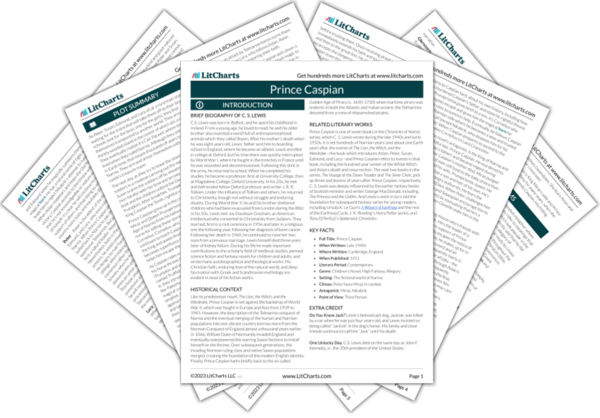Although at this moment the siblings are working together—their huddle by the fire literalizes their need to stick together for protection and safety—it wasn’t always so. Edmund’s lack of a magical gift recalls his split from the rest in the previous book of the series—in
The Lion, the Witch, and the Wardrobe, he aligned himself with the forces of evil but eventually redeemed himself and became a force for good. His story suggests the potential for redemption, even when people make bad choices (and Susan is already allowing her fear to dictate her actions rather than her faith in Aslan, suggesting that she might be the one in need of redemption this time).


